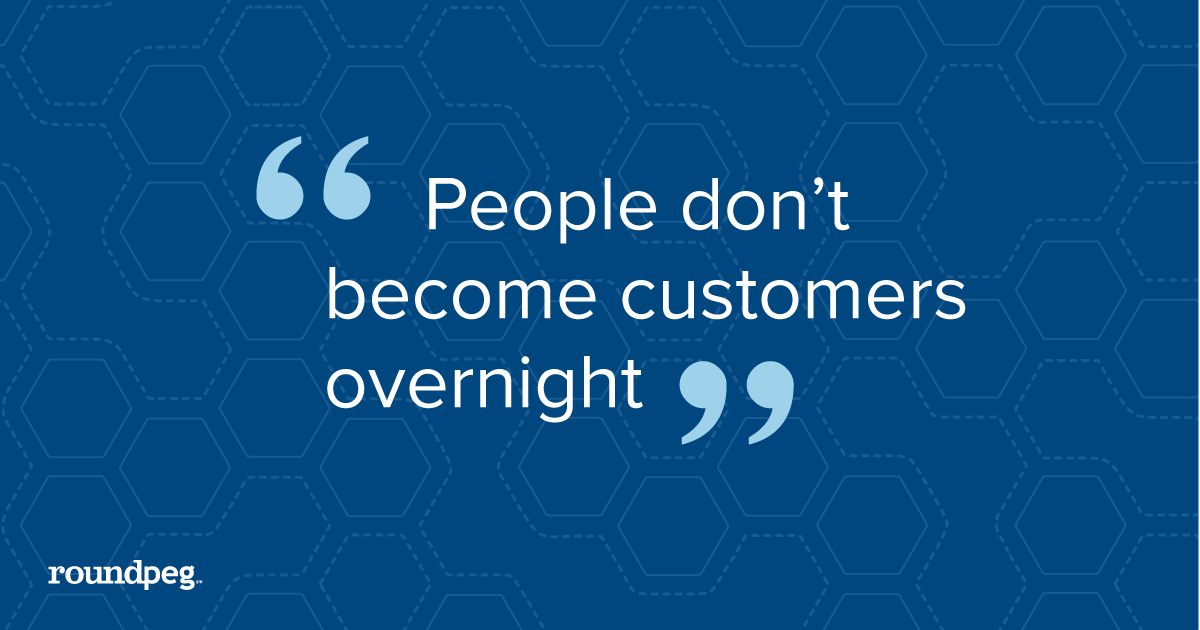
People don’t become customers overnight. Typically they start out as a random visitor to your website or someone you bump into at a networking event. You need the right marketing pieces in place to help that stranger become a prospect, a client and maybe even a raving fan.
What kind of marketing tools will move someone through your sales funnel? Information is your most powerful tool. Today’s consumer is not impressed by a hard core sales pitch. People want to make informed purchase decisions. Creating content which answers questions as part of the purchase process helps you attract potential prospects and engage them with your brand. These marketing tools will increase the chances you will close a sale and create long-term relationships so customers will ultimately refer you to others.
As you make the shift to this customer driven marketing approach, you need to shift from pushing information at people (think TV or radio advertising) to offering content which pulls people who are interested toward your website. Once they arrive, a structured process further narrows the audience, driving qualified leads into your sales funnel.
This approach is often referred to as Inbound Marketing where the information you provide gently pushes a prospect toward a sales decision without overtly selling. To make an inbound campaign work there are several pieces you need to have in place. In addition to our list you will see links to some of the free tools we have developed to help you build your own inbound campaign.
Inbound Elements
Ideal Customer – It is impossible to create really compelling content if you don’t know who you are writing for. While you may reach a broader audience, the more focused your messaging is, the more likely you will answer just the right questions at just the right time for the kind of people you really want to work with.
Key Word Research – I am not going to suggest that you write for search engines because at the end of the day they don’t buy from you, people do. Taking time to consider how people are phrasing their searches for companies like yours may lead you to some very interesting topics for your blog. One of my favorite tools is Answer the Public which will show you a series of common questions related to almost any search term.
Blogging – Creating ongoing, fresh content that is interesting to your target audience is a key for inbound marketing success. Typical blog posts should be 400 – 600 words to meet current Google requirements, They should always include at least one featured image to enhance social sharing. A content calendar will help you plan your monthly blog posts.
Social Media updates – While this will vary tremendously by industry, a good rule of thumb is at least a daily update on Facebook, LinkedIn and G+. Twitter is optional, but if you are going to be on Twitter, do it right with 5 – 10 updates and interactions a day. Your social content should include a mixture of informative, engaging and entertaining content. Consider social media advertising to promote specific programs and events.
Email Marketing – A good email program is a mixture of newsletters and auto responders triggered by events such as a phone call or a download of information from your website. We always recommend Constant Contact as the platform for the email marketing program.
Gated Content and Landing Pages – These may be check lists, workbooks or research studies. This content is the core of a customer-driven marketing program. It creates new leads and helps grow your email list. This includes development of the content itself and then adding calls-to-action throughout your website, building custom landing pages, conversion forms, thank-you pages and follow-up emails. These pieces all work together to move prospects through your sales funnel. We like Formstack and Gravity Forms to collect email addresses in exchange for the offer.
SEO – The rules for search engine optimization (SEO) change so your website needs to change as well. We install Yoast SEO to help improve page titles and meta descriptions.
Online Advertising – This is never our first recommendation, but sometimes advertising in limited doses can help jump start an inbound program. In addition to Google, we have seen tremendous success building on the social networks if a client has an established community on Facebook or LinkedIn.
Inbound marketing takes time
Don’t start content marketing if you need sales today. This approach takes time as you find and cultivate an audience, discover your unique voice and develop a series of informative downloads and offers which will generate traffic and conversions. In most cases when we’re working on content marketing with a client, we start to see real results around month four. That’s how long it takes to get all the pieces in place and build up enough content and credibility for people to start taking notice.
For companies who have the ability to be patient, content marketing can pay off in a major way. But not every company can afford to be patient. If you need a serious bump in sales today, advertising may be a better route. The challenge is there is no residual with advertising. Once you stop paying, the leads stop too. With inbound, even if you stop creating new content (though we don’t think you should) those blog posts and downloads on your website will continue to attract new visitors long after they are published.
Ready to switch to a customer-driven marketing program?
Roundpeg is an Indianapolis marketing strategy firm.

